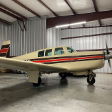How long for a hot start
-
Members Online
- Mooney in Oz
- jetdriven
- Igor_U
- Kerrville
- EJS
- eman1200
- M20S Driver
- GeeBee
- ZuluZulu
- mmcdaniel33
- mgtrevor
- goodyFAB
- ELysek1
- amillet
- N201MKTurbo
- Rwsavory
- Mac80
- Justin Schmidt
- richardbrochu27
- Speed Merchant
- LANCECASPER
- exM20K
- FoxMike
- VetRepp
- wombat
- mooniac58
- M20R
- Ned Gravel
- Firefly
- 201Steve
- Bunti
- Ragsf15e
- BrentS
- cferr59
- hubcap
- ohdub


Recommended Posts
Join the conversation
You can post now and register later. If you have an account, sign in now to post with your account.